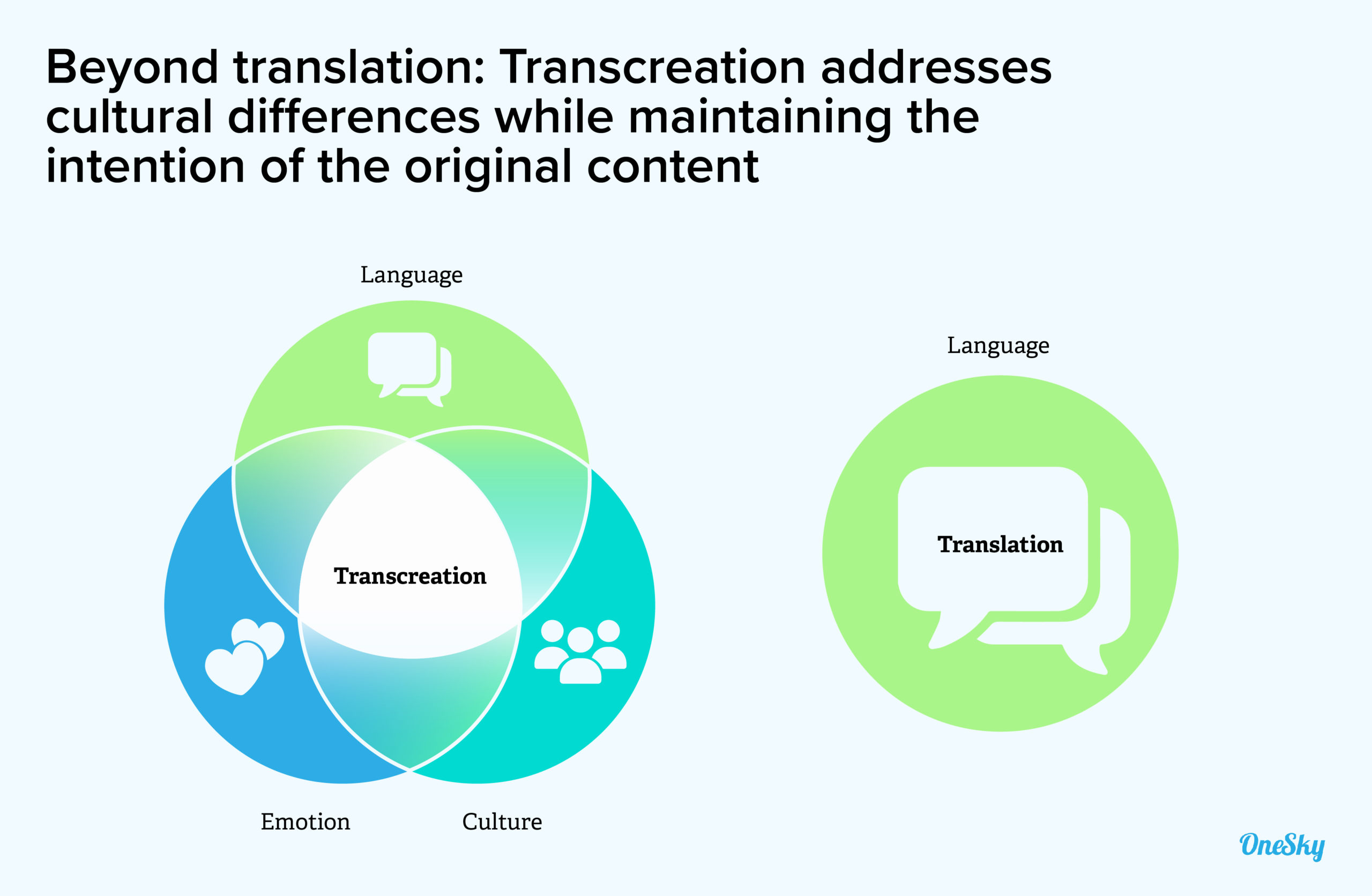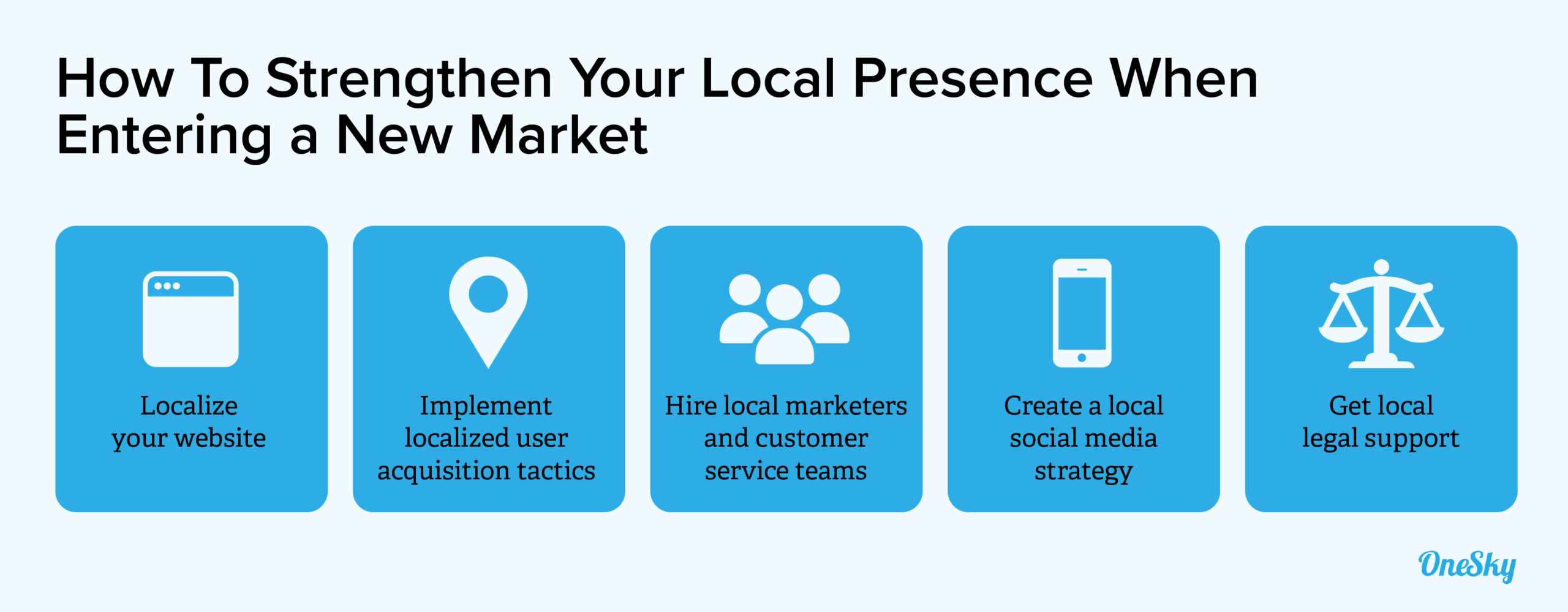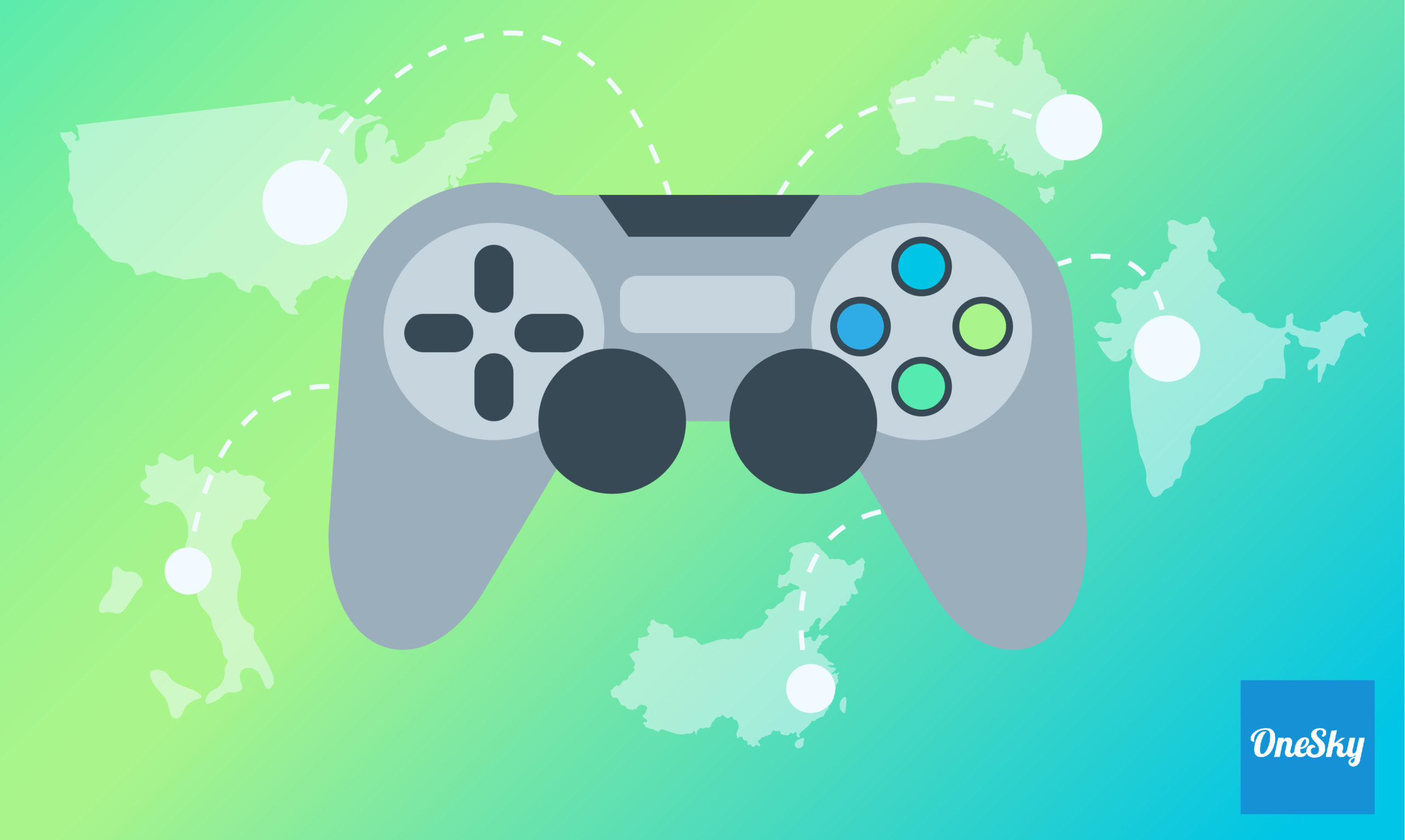How to Launch Games in Multiple Countries
The global gaming market will grow from $175.8 billion in 2021 to over $218.7 billion in 2024. Asia will account for 55% of players, while Europe and North America will represent over 40% of game revenue.
Launching your game in multiple countries can help you grow your user base and gain market shares. If you haven’t considered doing so already, you’re leaving money on the table.
But entering the global market involves a lot more than what meets the eye. Let’s look at all the key steps to launch games in multiple countries and what you must consider.
How To Launch Games in Multiple Countries
Follow these steps to make sure you have all your bases covered when you launch games in the global market:
Identify Markets With Potential
Don’t launch in any and every country just because you think you have to. Take the path of least resistance and market to audiences who want to buy your game. Look at your current analytics and see where your customers come from. These countries are good candidates for your foray into the global market.
Validate Your Assumptions
If you have a few potential markets in mind, you can test the water before investing in localization. Translate your app store description into the local language and see how users respond. Optimize the title, copy, and keywords for the local market to get a good gauge of consumer preferences.
If the game’s original content is in English, you can launch it in locales comfortable with the language. For instance, you can test the Asian market by launching an English-only game in Hong Kong, Singapore, or Malaysia.
Develop Your Game For Easy Localization
Entering multiple markets means localizing your game many times. Consider the nuances that go into the process — little things do add up! For example, if your original content contains a lot of slang and cultural references specific to your home market, the effort to localize the content will be higher.
While local references can help you connect with the audience, you should balance them with a neutral global language to streamline the translation and localization processes.
Align Your Local Teams
Having boots on the ground is essential for effective game localization. Make sure local team members understand your brand and the game (e.g., storyline, characters) so they can translate and transcreate content that resonates with the local audiences. Also, create a translation style guide to make sure everyone is on the same page.

Price For the Local Market
Price your game competitively by considering how much consumers pay for games and other goods in your target locales. You may need to start at a lower price point to attract more downloads and gain traction, but ultimately, you should aim to achieve price parity in the local markets to maximize profitability.
Focus on One Market at a Time
Launching a game is complicated, even in your home market. When you enter the global market, start small and localize your game for one locale. This allows you to iron out the kinks and avoid multiplying mistakes. Tackling one country at a time also enables you to focus attention and resources on all the components involved in a launch, such as marketing.
Strengthen Your Local Presence
If your game gains traction after the initial launch, you can go one step further and establish a more prominent local presence for your brand. You can do so by localizing your marketing strategies, website content, user acquisition tactics, and more to ride the momentum and further grow your market shares.

Key Considerations When Launching a Game in the International Market
You can expect some curveballs when you launch games in different markets. Here are some considerations to help you avoid unpleasant surprises.
Metrics and ROI
Adjust your expectations on metrics and ROI for each locale based on market conditions. For example, you may need to spend more on user acquisition in South Korea than you do in Brazil. Set a realistic estimation on what it takes to enter each market, so you can establish objectives and allocate resources strategically.
Marketing Messages
Tailor your marketing content for each locale to ensure that your message resonates with the target audience while aligning with the overall brand image to establish a consistent global presence. You should A/B test your promotional materials, as well as offers and price points, to see what works for each country.
Cultural Differences
To succeed in a market, the content in your game and marketing materials must connect and resonate with your audience. Address cultural differences in the translation process by using local translators who also have experience in the gaming market to ensure that your copy hits the spot.
Device Preferences
Your game must support devices used by the target audiences. If it’s optimized for iOS devices, but the operating system isn’t popular among local users, it’d be challenging to establish a foothold in the market. The same goes for desktop games if most of your target audience play on mobile devices.
Content Translation
Localizing a game goes beyond translating the in-game text. You must also address store descriptions, marketing content, terms and conditions, and other customer touchpoints. Create a requirement list and have all the pieces ready when you send them to the translation team. This can also help improve consistency across all channels.
Tone of Voice
The tone of voice of the content is critical to the game experience, so ensure that the original intent and the emotional impact don’t get lost in translation. Provide context to your translators by including a translation style guide, a summary of the plotline, and details about the characters to ensure high-quality translation.
Quality Assurance (QA) and Testing
Don’t skimp on QA and testing, even if you want to shorten the time to market. While your original game may work perfectly, things do shift during the localization process. For example, different text lengths or direction can affect the visual experience and impact how the market perceives your brand.

Timing For Game Launch
Leverage cultural moments in the local market, such as Lunar New Year, Valentine’s Day, etc., to drive purchases. You can also release major updates or introduce new characters to coincide with holidays and special occasions to generate buzz and become part of the conversation on social media and other channels.
Game Discoverability
It doesn’t matter how great your game is if your target audience can’t find it. To maximize your customer base, you need an effective targeting strategy. Find out how gamers in the local market discover and purchase new games (e.g., on the app store, through word-of-mouth,) then focus your marketing efforts on those channels.
Monetization Strategy
Consumer preferences and behaviors vary in different markets, so you can’t copy-and-paste the monetization model from your home market and call it a day. For example, 83% of gamers in Brazil prefer seeing ads rather than paying for a game. You also need to consider the genre of the game and the user profile of your audience.
Local Partnerships
Work with partners and third-party service providers with local knowledge to help with the launch. These can include PR firms, game usability consultants, and user acquisition experts. The gaming industry has a strong community, so don’t forget to tap into local events and become part of the scene.
Up Your Game With Effective Localization Management
Launching games in new markets isn’t a walk in the park. You can use all the help you need to keep track of the moving parts.
Effective game localization management starts with a robust localization management platform, which allows you to manage the entire process from a centralized location.
OneSky is a complete localization solution that allows you to integrate workflows, manage team communication, and facilitate QA all in one place. Learn more and try us out for free.


 Written by -
Written by - 




 Written by
Written by 


